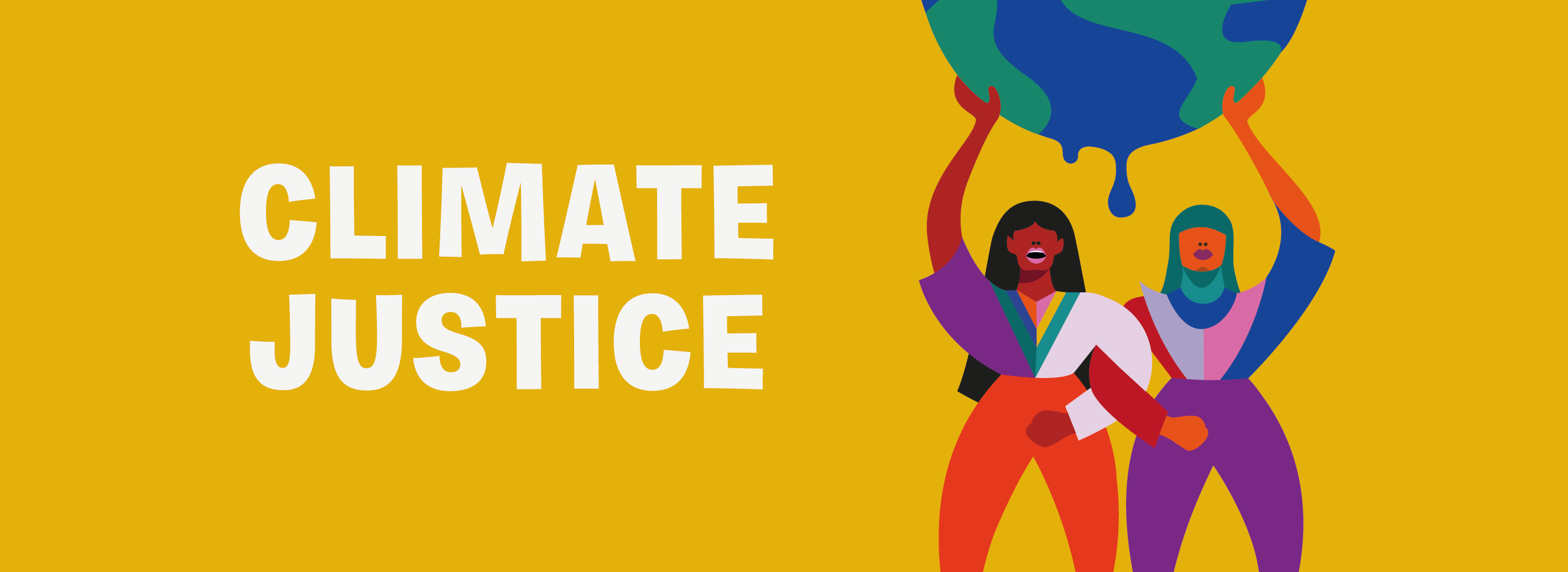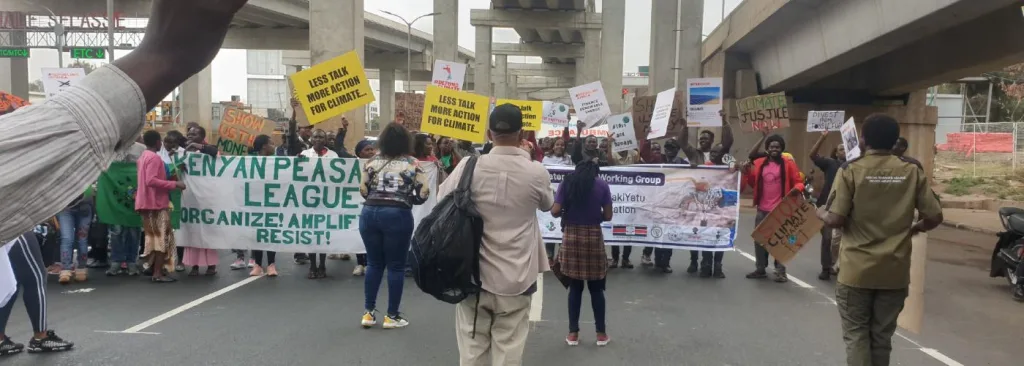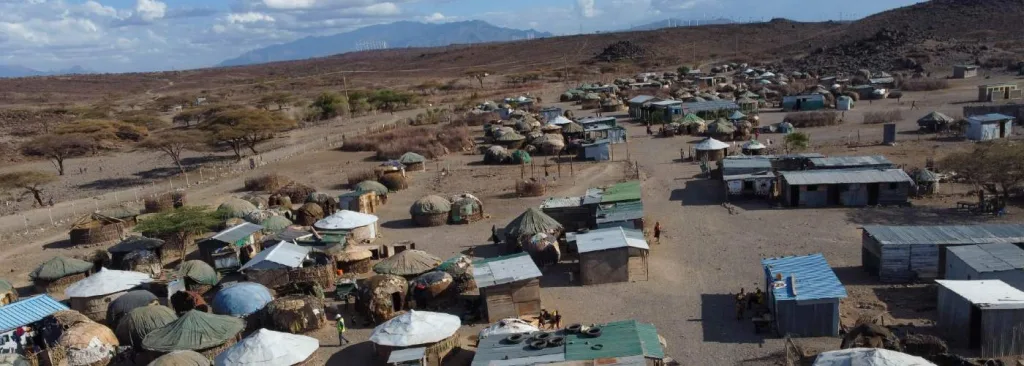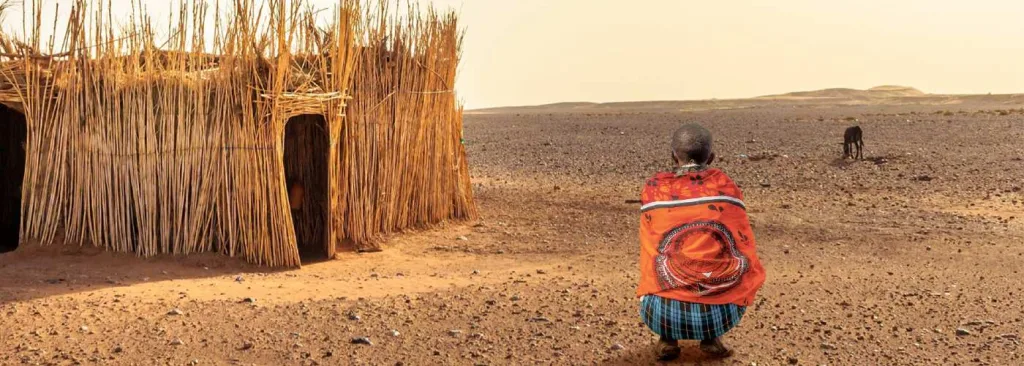Collins Otieno and Hugo Schiffers
The United Nations COP28 climate summit starts at the end of the month in Dubai and is expected to be about one thing in particular: Loss and Damage. But what does this mean? And how can it be used to achieve climate justice? Find out in this Hivos explainer.
In short
- Developed countries and big polluters have the obligation to finance the USD 400 billion needed for loss and damage.
- The World Bank is not the appropriate institution to host the Loss and Damage Fund. It may only do so on a temporary basis.
- The Loss and Damage Fund requires a democratic governance structure and robust mechanisms for involving women, Indigenous people, vulnerable communities and civil society. It should make these funds accessible to these groups at a local level.
Mitigation, adaptation, loss and damage. When you read about climate finance in the news, you are bombarded with jargon. While this explainer focuses on loss and damage, it is easier to remember what it means in connection to the other concepts.
So, how does loss and damage relate to other climate finance?
To start with, climate change mitigation is avoiding and reducing greenhouse gases in the atmosphere in order to prevent the planet from further warming. The more mitigation we do, the less climate change adaptation is required, which is a set of actions that allows people and societies to adjust to climate change’s adverse effects. Think of drought, floods and cyclones.
While mitigation is appropriate for countries with higher emissions like the United States and China, adaptation is increasingly critical for countries and continents with few emissions like Africa, whose greenhouse gas emissions account for less than four percent of the global total.
Loss and damage finally occurs when the limits of adaptation have been reached. When land has irretrievably been lost to rising sea levels or when drought has changed farmlands into deserts as a result of changes in climatic conditions. A loss and damage fund supports vulnerable states and communities that suffer from climate damages.
When did loss and damage begin to top the agenda?
Developing countries have advocated for a more equal distribution of climate costs for over three decades. But a breakthrough only came last year, at the COP27 climate summit in Egypt. There, countries reached an agreement on a global funding arrangement for loss and damage.
The past eleven months, a group of both developed and developing countries called the Transitional Committee has been meeting in order to outline the fund. This proved extremely difficult, and only last weekend did they reach consensus about a blueprint – just in time for the COP28 climate summit, where it will be put up for a vote.
Why has it been so difficult to arrive at a blueprint text on loss and damage?
There have been different obstacles. Some are very practical, like: how do you know a natural disaster is caused by climate change? How do you measure damage? And should China, as a developing country but also the world’s biggest polluter, contribute to the fund?
More fundamentally, countries, regional negotiating blocs and international organizations have different ideas about what loss and damage should mean and what the fund would look like. While countries in the Global South often think of loss and damage as compensation or a form of reparations, developed countries resist this. They fear this would result in unlimited (future) costs for them.
Reactions to the plans presented this week reflect this. Whereas a representative from Barbados called them a “return to volunteerism,” the United States felt they do not emphasize the “voluntary nature of contribution” to the fund enough.
For Hivos a loss and damage fund cannot exist without a degree of obligation for developed countries and big polluters to commit funds. Climate justice means that these states own up to their (historic) responsibility for the climate crisis. Poorer countries, with small carbon footprints, have contributed the least to the problem but are bearing the brunt of its impacts. The current plans do not emphasize this justice element enough.
How large should a loss and damage fund be?
The economic cost of loss and damage in developing countries is estimated to be between USD 290 and 580 billion per year by 2030. This increases over the years as the climate crisis continues. Hivos and other civil society organizations call for the fund to initially be USD 400 billion per year.
The current plans do not mention a scale at which the fund should operate. However, without a firm target the fund risks becoming seriously underfunded and therefore ineffective. This is a credible risk, given that many rich countries push alternative mechanisms based on private financing, such as insurance. It is, however, not a substitute for loss and damage and should not distract from it.
Who should host the fund?
That is another point of contention! On November 5, developing countries in the Transitional Committee made a big concession by agreeing that the loss and damage fund would be managed on an interim basis by the World Bank for four years.
Hivos stresses that the fund should be an independent entity under the oversight of the UN Framework Convention on Climate Change. Furthermore, it should have a democratic governance structure and robust mechanisms for the involvement of women, Indigenous people, vulnerable communities, and civil society organizations.
Why not the World Bank? And why this need for independence? There are several reasons.
- The World Bank financing system often involves providing loans. These loans and their interest rates push developing countries into debt traps. Loans also do not appreciate the climate justice aspect of loss and damage. It is unjust for poor countries to accumulate debt in order to pay for climate change damage that has been caused by the big polluters.
- The World Bank is an organization dominated by rich countries. The more a country pays, the larger its vote share is. At the same time, the President of the World Bank is selected by the United States – the fund’s staunchest critic – and is usually a US citizen. It makes the World Bank an inappropriate choice in a context where developing countries mistrust the Global North after years of unmet financial promises.
- The World Bank is associated with projects that have caused social and environmental harm and led to the displacement of Indigenous people.
Will the loss and damage fund support local vulnerable communities?
It should. However the plans presented lack a structure through which finances are able to reach local communities. The World Bank itself, if allowed to provide an interim management of the fund, does not have a track-record in achieving this.
Hivos insists that the loss and damage fund be a financing system that is simple, quick, and directly accessible to local communities. Existing climate financing flows through large and slow international organizations, often overlooking smaller, hard-hit communities. This entrenches inequality in the system.
How inclusive is the fund?
Hivos welcomes the fact that the fund plans to incorporate knowledge from vulnerable and Indigenous knowledge when assessing climate damage. However, the board that will oversee the implementation of the fund should reserve at least one seat for impacted communities, Indigenous people or civil society.
Secondly, human rights deserve a more prominent place in the issue of loss and damage. Recognizing that climate justice is a human rights issue gives further protection to vulnerable communities and emphasizes the obligation other countries have.
Anything else?
A Loss and Damage Fund plays an essential part in protecting vulnerable communities across the world in the face of the climate crisis. However, we should see it as being additional to other forms of climate financing. Climate adaptation (see above) is underfunded and needs more attention from the global community. As does the task of aligning global financial streams with our climate goals, as stated in the Paris Agreement. This has not started yet. As long as money continues to stream to fossil fuels, the longer it will take us to get rid of an addiction that is destroying the planet.




